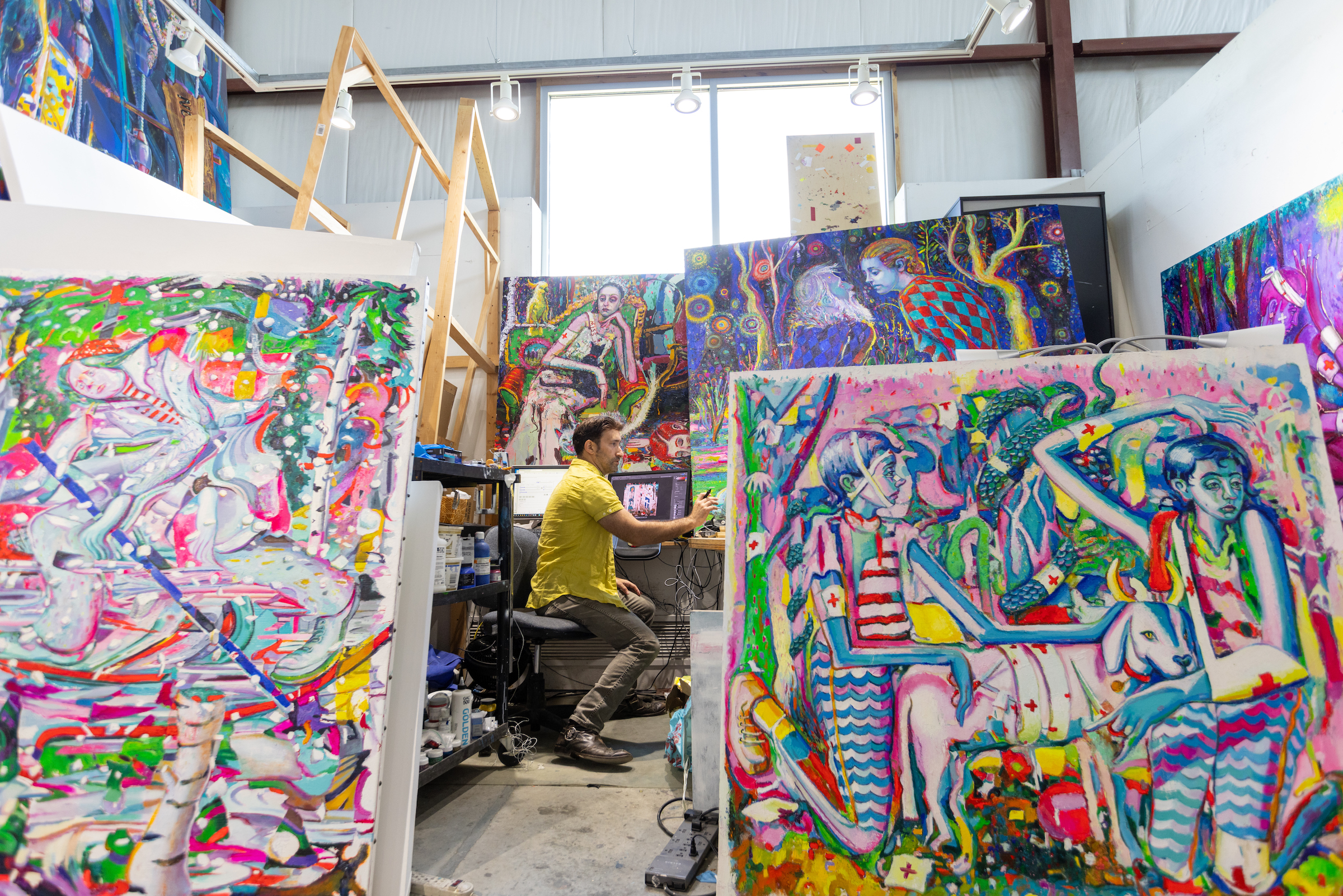There’s a new addition to the course catalog at Ringling College of Art and Design, a small private art school in southwest Florida: an Artificial Intelligence Undergraduate Certificate.
The college claimed its new program is the first-of-its-kind AI certificate at an undergraduate arts institution in a news release earlier this month. Other schools in the United States offer courses and certificates focused on the integration of artificial intelligence and creative work, and educators across the country have already brought the technology into the art studio. Critics, however, say pushing AI into arts education won’t level the playing field for professional artists competing against increasingly sophisticated generative tools.
Ringling’s AI certificate requires students to complete three AI-focused classes, including a Fundamentals course and others that employ the technology across artistic disciplines, such as AI Techniques and Processes for Art. While developing the program, the college’s newly appointed AI Coordinator Rick Dakan thought of the cliché: “AI won’t replace you, you’ll be replaced with someone who knows how to use AI.”
Dakan told Hyperallergic that he wants students to leverage the technology to “raise their floor” as creative professionals, not to replace their human ingenuity.
Before designing the certificate, Dakan, a creative writing professor, had already started to incorporate generative AI into some of his courses.
“You’ll quickly learn that AI is not as good as you at writing if you’re a good writer,” Dakan said. “But it can help you in those areas where you aren’t as strong.”
At Indiana University’s (IU) Eskenazi School of Art, Architecture and Design, professors Caleb Weintraub and David Ondrik introduced “AI in the Studio” in spring 2023. Twenty-two students signed up for the inaugural course at a moment Weintraub described as the “beginning of the buzz around generative AI.”
“It was a very hands-on, studio-based class, but there were components geared toward a reflection on impact,” Weintraub told Hyperallergic.
Weintraub and Ondrik challenged their students to find generative AI’s faults, and in doing so, to find their strengths as artists.
“We had some interest in taking advantage of glitches,” Weintraub said. “We often like those kinds of slippages.” The duo said image generators sometimes struggled to meet the artistic requests of the students, and responses were often “hilarious.”
Ondrik shared photos of some of the final products with Hyperallergic. The students satirized uncanny AI-generated images and generative chatbots in their real-life sculptures, photography displays, and collages.
IU student Nathaniel Gottschalk’s mixed-media sculpture for his final project used the Midjourney blend function to mix digital images with work by Cuban-American artist Ana Mendieta.
“Her work latched onto me majorly around that time. There were discussions of AI being magic,” Gottschalk told Hyperallergic. “Magic and power and symbols and ritualistic setups were all things that I leaned into obsessively.”

The course also included discussions on the ethical complications of AI, including copyright gray areas. “It’s important to share those concerns with the students,” Weintraub said. “All this data is coming from somewhere, and most of the time, people are not being compensated for it.”
Last week, a California judge gave a group of illustrators the green light to move forward with a copyright infringement lawsuit against Stability AI, Midjourney, DeviantArt, and Runway AI, despite throwing out claims of unjust enrichment.
Molly Crabapple, a New York illustrator and AI critic, opined that art studio programs embracing AI serve the academic institutions more than they serve the artists. “Anyone can use AI. You don’t need to go to art school and get into $200,000 of debt to learn how to put a prompt into a generator,” Crabapple told Hyperallergic.
The programs, Crabapple said, won’t help artists gain an advantage over generative tools in arts industries. Artists can “compete” with AI by stigmatizing its usage to hinder its rise instead, she suggested, pointing to backlash against recent unpopular AI advertising campaigns. This month, Google pulled its Olympic “Dear Sydney” ad for Gemini AI when it sparked outrage after it turned the act of a child writing a heartfelt fan letter into a plug for a writing bot.
Weintraub and Ondrik advised their students to disclose the use of AI in their artworks.
“When you’re using it, you should acknowledge it,” Weintraub said. “Especially if it is masquerading or seems like it might be the work of an individual.”





